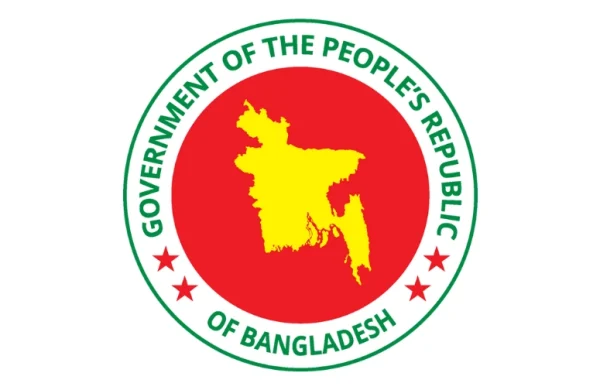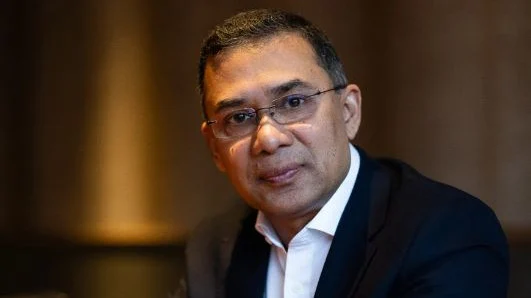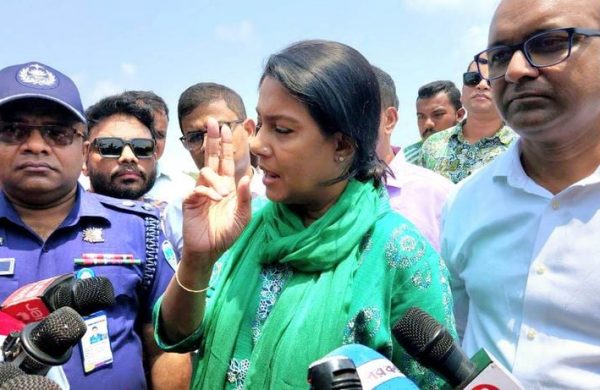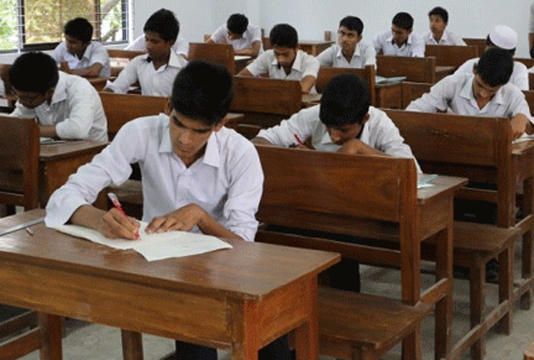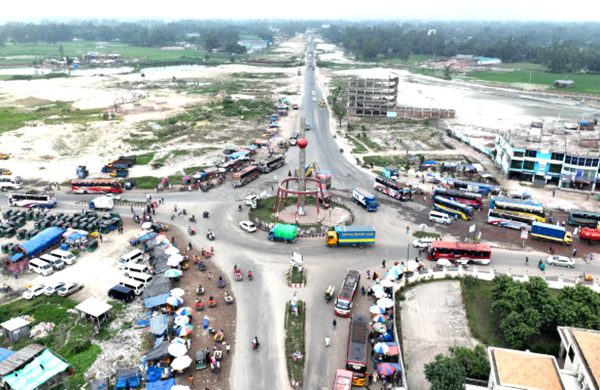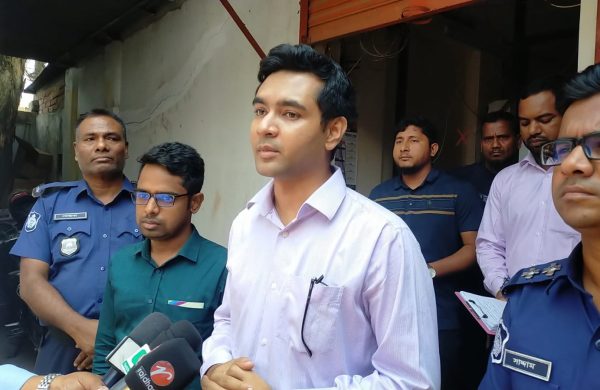Ghost Roads and Empty Hospitals: How corruption failing Bangladesh
- Update Time : Thursday, April 24, 2025
- 7 Time View

Staff Correspondent:
As Bangladesh sets its sights on becoming a developed nation, systemic corruption remains one of its most formidable obstacles, infiltrating every stratum of society – from mega infrastructure projects to the most basic public services.
From glistening billboards heralding “mega development” to hollow concrete shells gathering dust, the nation’s ambitious growth narrative is increasingly undermined by a sobering reality – corruption is throttling progress and betraying the very people it purports to uplift.
In recent years, billions of taka have been funnelled into infrastructure, healthcare, and education. Yet many of these projects exist only on paper or lie incomplete, leaving citizens questioning where the money has truly gone.
INFRASTRUCTURE MIRAGE: PROJECTS BUILT TO SIPHON, NOT SERVE
Over the past decade, Bangladesh has embarked on numerous mega projects – the Padma Bridge, Metro Rail, Rooppur Nuclear Power Plant, and countless highways and flyovers.
These undertakings represent national pride but have also become fertile grounds for corruption.
A 2023 World Bank study estimated that Bangladesh loses over 2% of its GDP annually to corruption, particularly in public procurement and infrastructure.
Experts argue that many of these ventures are conceived not to meet public needs but to create opportunities for kickbacks and fund embezzlement.
Consider the road cutting through Kurigram’s remote villages – once paved with optimism, now largely washed away.
Villagers alleged that local contractors, shielded by former ruling party leaders, pocketed funds by using substandard materials.
A road meant to benefit 10,000 residents now barely supports foot traffic.
“The work was done on paper. The bills cleared. But the road was never meant to last,” said a local union council member, speaking on condition of anonymity.
THIS IS FAR FROM AN ISOLATED CASE.
A 2022 audit by the Local Government Engineering Department (LGED) found that over 40% of rural infrastructure projects were plagued by serious irregularities – from fake tenders to work existing solely in documentation.
THE CASE OF VANISHING ROADS
Bangladesh’s rapid economic ascent and ambitious development projects often garner international acclaim.
Yet beneath the surface of gleaming bridges and highways lies a grimmer reality – rampant corruption draining the nation, turning dreams of prosperity into crumbling roads, empty hospitals, and broken public trust.
In the rural district of Patuakhali, locals jest about a “road to nowhere.”
Constructed two years ago under a rural development project, the road remains unfinished, barely passable during monsoon, with parts already disintegrating. Allegations quickly surfaced: fake billing, inferior materials, and contractors disappearing post partial completion.
“They inaugurated the project with cameras, but now it’s just dust and broken promises,” Abdul Karim, a local farmer, told a local newspaper.
Such “ghost roads” are hardly rare. A Transparency International Bangladesh (TIB) report revealed that nearly 30% of funds earmarked for rural road development are lost to corruption, bribery, and fictitious tenders.
ALL-WEATHER ROAD IN KISHOREGANJ TURNS INTO A WHITE ELEPHANT
The much-anticipated all-weather road in Kishoreganj – once touted as a transformative infrastructure project aimed at easing transport challenges and stimulating the local economy – is now widely derided as a “white elephant.”
Constructed at the cost of several crores of taka, the road was intended to link remote areas of Kishoreganj with the district town, promising year-round accessibility. However, poor planning, shoddy construction, and lack of maintenance have rendered it nearly unusable within just a few years.
Locals report that large sections are already riddled with potholes, with some turning to mud pits during the rainy season – negating the very idea of an “all-weather” road. Despite repeated complaints, authorities have yet to take concrete action, fuelling public anger and disappointment.
“We had high hopes that this road would change our lives by improving communication and market access, but now it feels like a waste of money,” said Abdul Karim, a resident of Pakundia upazila.
Locals have raised serious concerns about the accountability of the contractors and officials involved. Allegations of corruption, use of low-grade materials, and irregularities in project oversight are widespread.
Experts warn that without urgent repairs and monitoring, the road will not only fail to serve its purpose but also stand as a glaring testament to misused public funds.
The Roads and Highways Department (RHD) has yet to release an official statement regarding the road’s current state. In the meantime, the so-called all-weather road remains a symbol of frustration and broken promises for the people of Kishoreganj.
HEALTH SECTOR’S SILENT DEATH
While glossy budgets for the health sector expand annually, the condition of public hospitals reflects a grim reality of corruption-fuelled neglect.
In Barisal, a newly constructed 100-bed hospital stands eerily silent – no doctors, no nurses, no equipment. The building is complete; the service is non-existent.
A TIB investigation found that bribes account for 25% of rural healthcare expenditure, rendering medical services inaccessible to the poor while funds meant for medicine, staffing and equipment are routinely misappropriated.
“We built the hospital. But staffing is another project, and that means more money, more bribes. So it remains empty,” admitted a mid-level health department official.
The COVID-19 pandemic laid bare the extent of the rot. Funds meant for pandemic response were misused – from fake mask deliveries to defective oxygen supplies. Ghost hospitals, phantom patients, and inflated procurement bills became the norm.
HOSPITALS BUILT BUT NOT FOR THE SICK
The healthcare sector’s story is echoed across the country. In Rajshahi, a newly-built 50-bed hospital stands empty – no doctors, no equipment, and no patients. Locals have dubbed it the “hospital of ghosts.”
Though constructed under a health sector project worth hundreds of crores, it remains non-functional due to political favouritism and embezzlement.
“Patients are forced to travel 40 kilometres for basic treatment while a fully built hospital is left unused. This is a crime against us,” said Shamsunnahar Begum, a local resident.
CORRUPTION IN THE SHADOWS
From kickbacks in mega projects to grassroots extortion, corruption permeates every sector. Local government officials, political leaders, and contractors form an entrenched network where every link is greased with money.
The Anti-Corruption Commission (ACC) occasionally launches investigations, but few face tangible consequences.
A senior government official, speaking off the record, said, “Many projects are approved just to siphon off funds. The work is secondary.”
The true victims of this widespread corruption are ordinary citizens – farmers unable to transport produce, students studying in dilapidated schools, and patients dying without treatment – all because greed is prioritised over service.
Economist Dr Nazrul Islam warned, “Corruption is eating away at our development. If this continues, our GDP growth will be meaningless – a number that hides growing inequality and suffering.”
Corruption in Bangladesh is not random – it is systemic and politically shielded. From local chairmen to national ministers, a chain of patronage ensures that the corrupt remain protected.
Contracts are frequently awarded to those aligned with the ruling party.
Though the ACC occasionally raises its voice, its effectiveness is crippled by political interference. Between 2018 and 2023, over 80% of major corruption cases either stalled or ended with lenient sentencing, according to the Commission’s annual reports.
From land development to school construction and relief distribution – all are seen as opportunities for extortion.
Even social safety nets like the “Old Age Allowance” and “VGD Cards” for the poor require bribes for inclusion.
“In our area, you need to pay Tk 5,000 to get listed for government relief,” said Shahana Begum, a widow from Narayanganj.
VICIOUS CYCLE: DEVELOPMENT WITHOUT IMPACT
Economists caution that Bangladesh risks falling into a high-growth, low-impact trap – where GDP figures rise but public services collapse.
Dr Zillur Rahman, a governance expert, observed, “Bangladesh is building, but not building for people. It’s building for networks of corruption. When roads crumble in two years, when hospitals stand empty, it’s not just waste – it’s theft of people’s future.”
The consequences are long-term – poor education, inadequate healthcare, rising inequality, and a disillusioned population.
Experts stress that strong political will, independent institutions, and active citizen participation are essential.
Without transparency and accountability, Bangladesh risks becoming a nation of unfulfilled dreams – a country of ghost roads, empty hospitals, and growing despair.
They further recommend enhancing the independence of the ACC with prosecutorial authority, digitising procurement and project monitoring, and reducing human interference to curb corruption.
Without sweeping reforms, Bangladesh may become a nation of “ghost projects” – where development is a spectacle, not a service.
“We don’t just need roads and hospitals – we need them to work. Otherwise, it’s just concrete and corruption,” lamented a frustrated schoolteacher in Dhaka.



